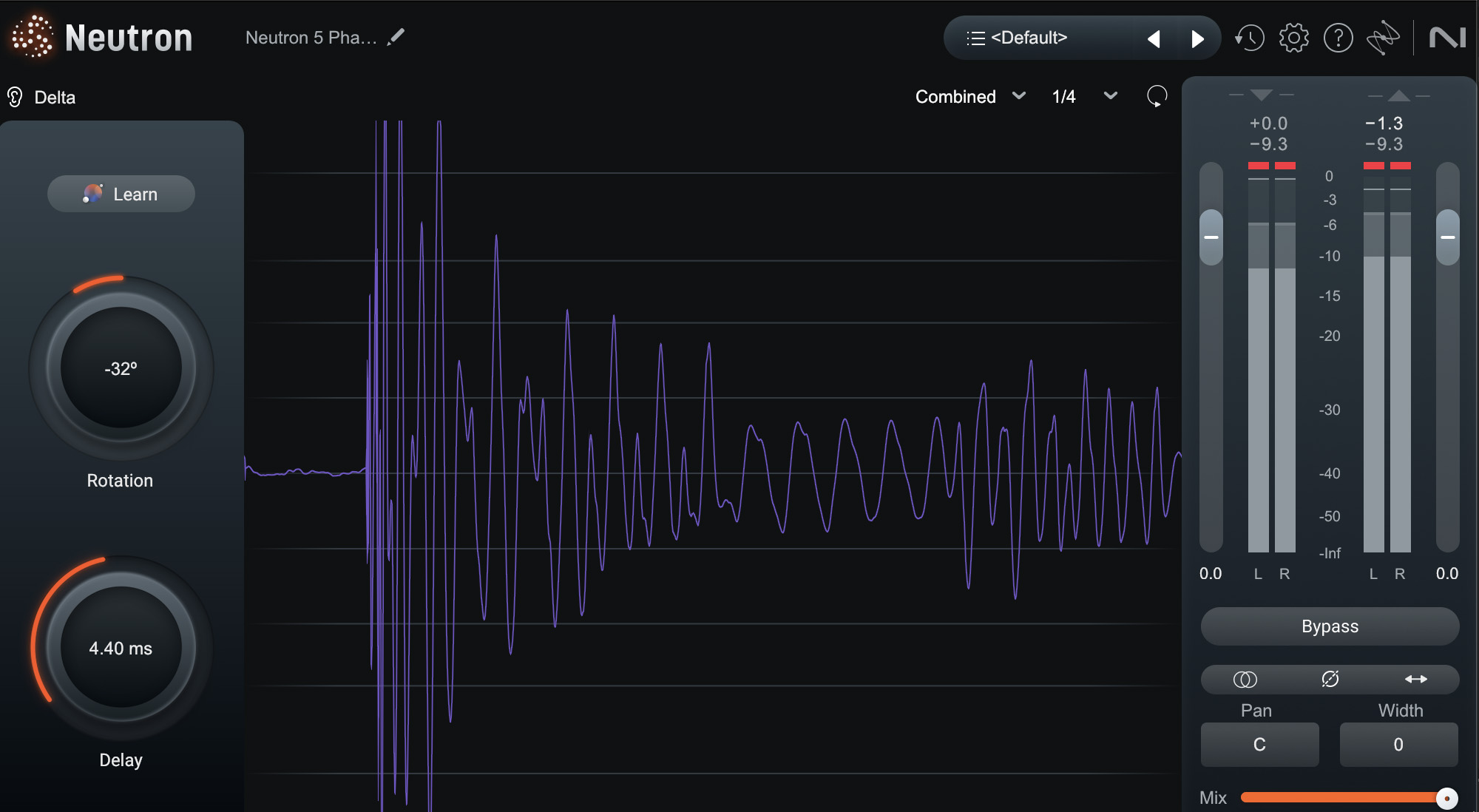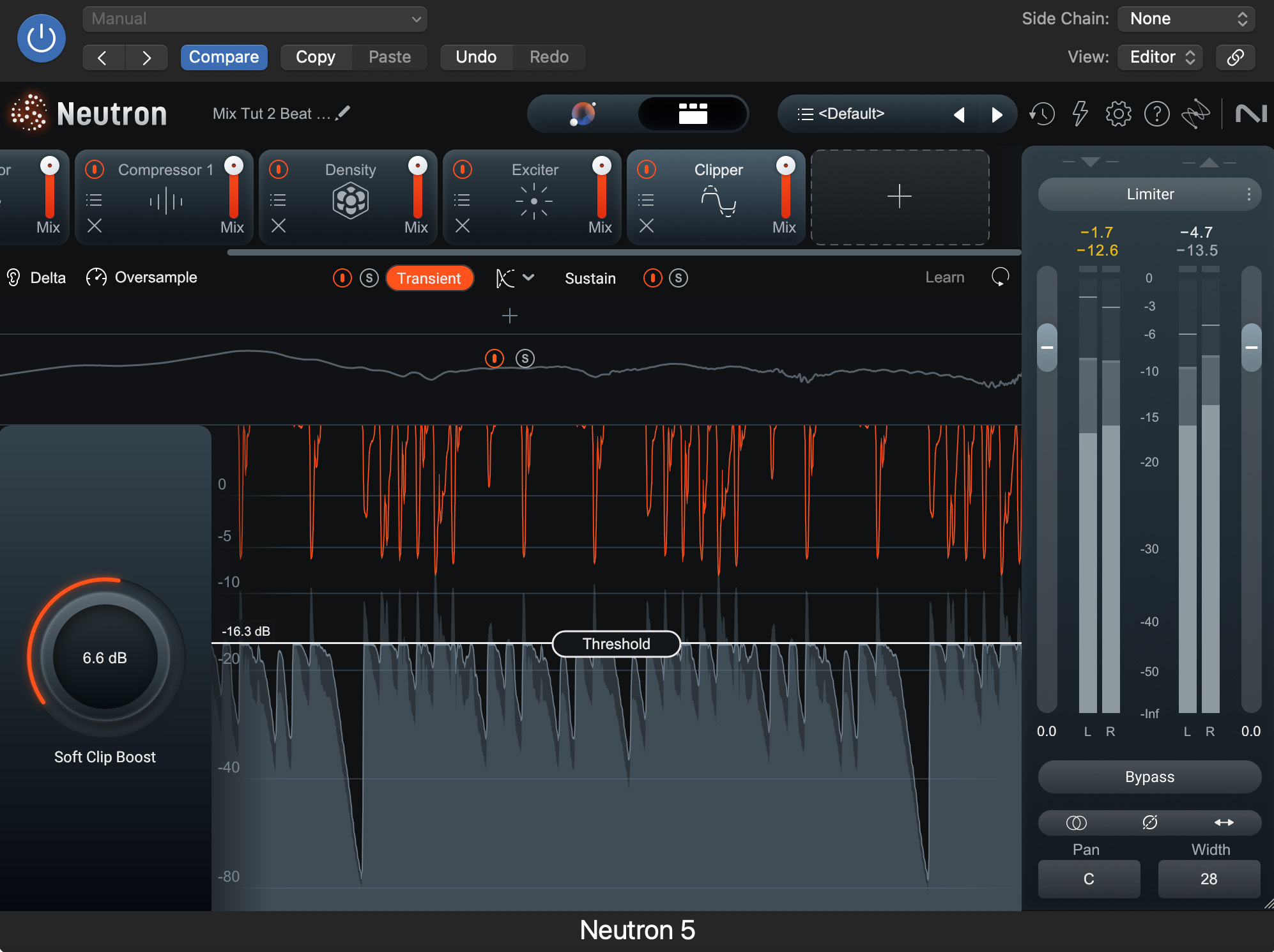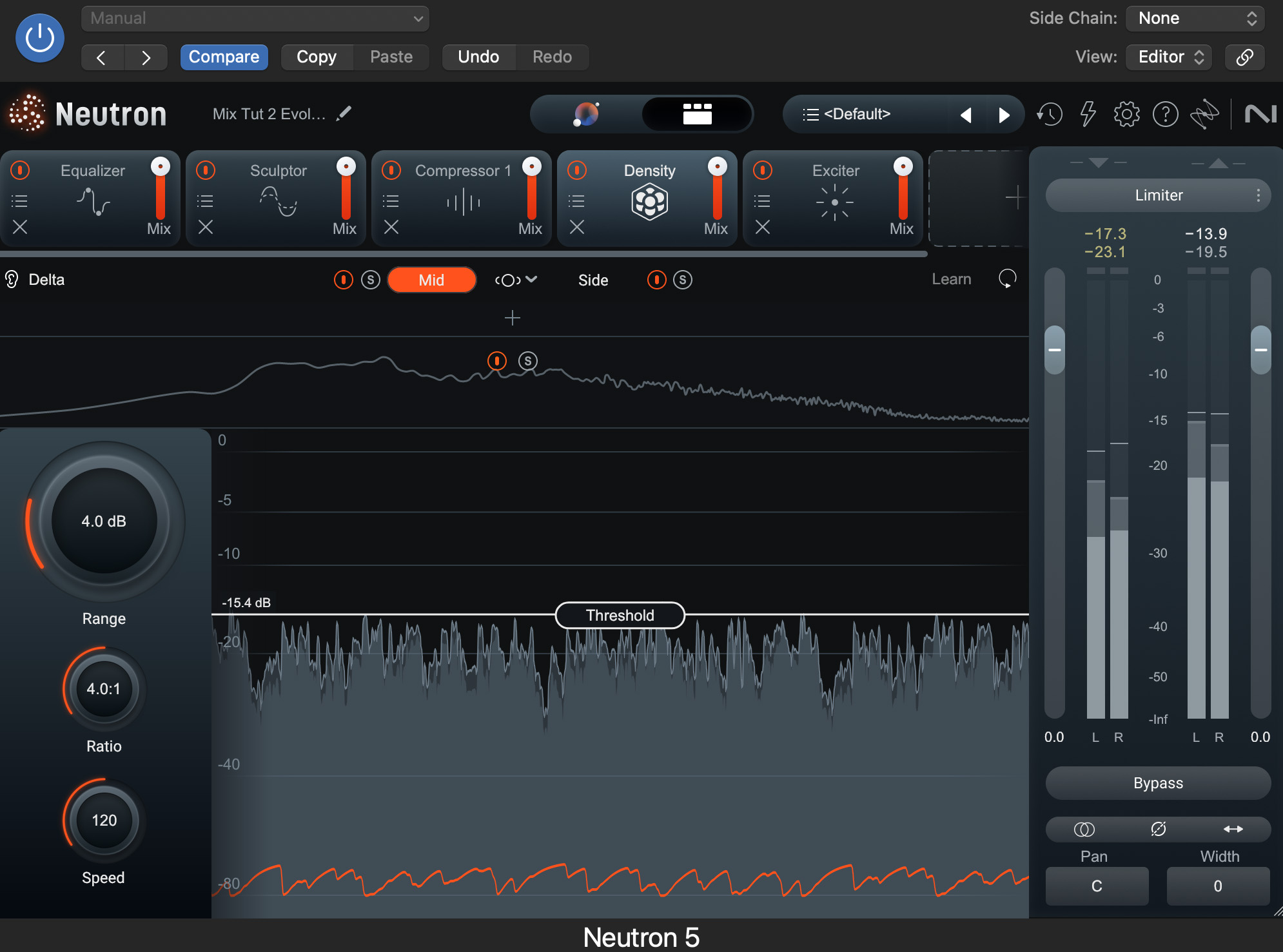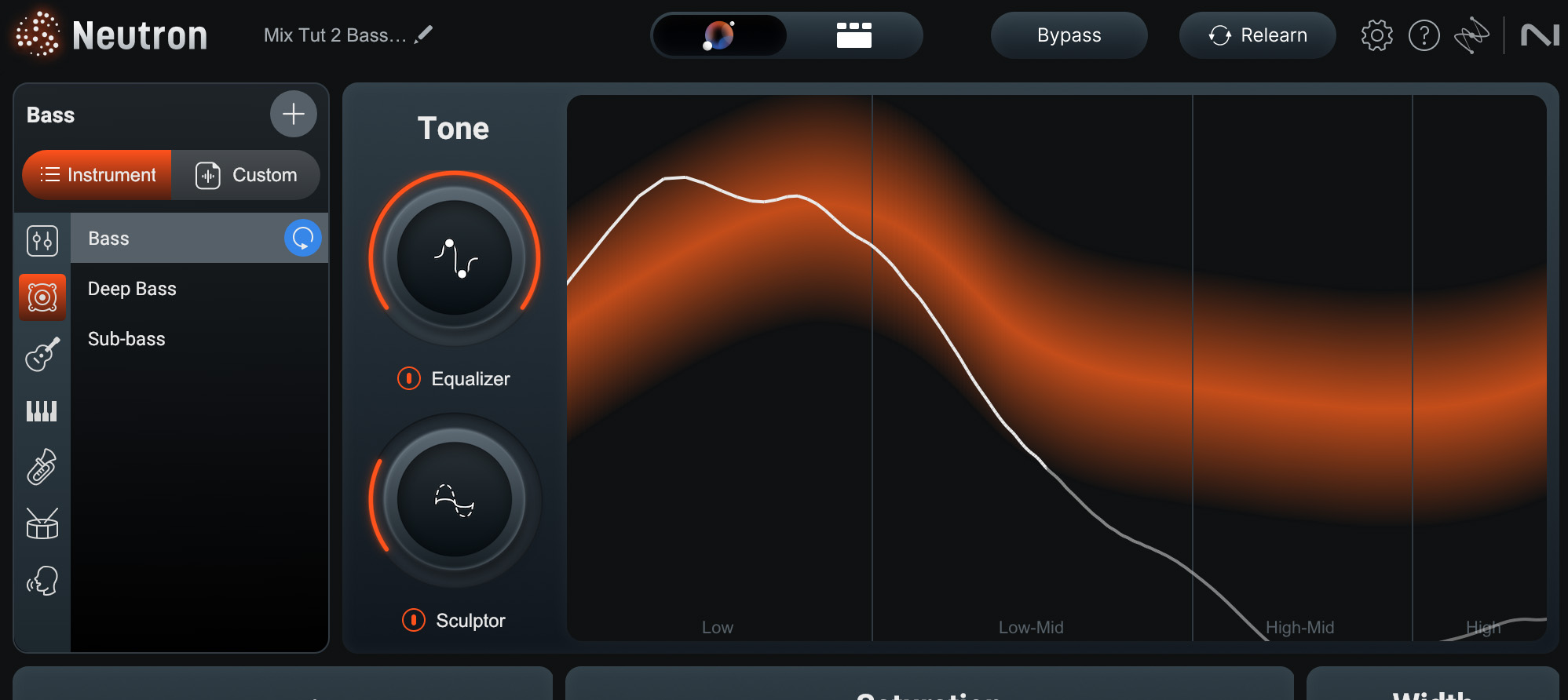MusicRadar Verdict
Neutron's suite of mixing tools are broad enough to work for musicians at all levels, but its accessibility for less-experienced producers is its strongest asset.
Pros
- +
Transient/sustain and M/S modes add a lot to the versatility.
- +
10 mixing modules cover a broad base of functionality.
- +
Assistant View makes Neutron pleasantly easy-to-use.
Cons
- -
New modules don't add much that's truly innovative.
MusicRadar's got your back
iZotope Neitron 5: What is it?
KEY FEATURES: Includes 10 modules and additional hub plugin. Modules: Equalizer, Exciter, Gate, Compressor, Unmask, Sculptor, Transient Shaper, Clipper, Density, Phase REQUIREMENTS: VST 3, AU, AAX. Mac: macOS Ventura (13.6.9), macOS Sonoma (14.6.1) Supported on Intel Macs and Apple silicon M-series Macs (native and Rosetta). Win: Windows 10, Windows 11. Buy at Plugin Boutique
Compared to its mastering suite Ozone and the post-production audio repair tools of RX, Neutron has always looked like the most accessible bundle in iZotope’s plugin line-up. This is, in part, simply because its tools are the ones with the broadest appeal. Unlike its more pro-focused counterparts, the EQ, dynamics and mixing tools bundled into Neutron have obvious uses for musicians of all stripes, from bedroom producers or guitarists recording demos to professional engineers, soundtrack composers and beyond.
Neutron is also accessible by design though. The software’s flagship feature is its AI-powered Mix Assistant tool, which listens to incoming audio and creates a custom preset specifically suited to the needs of whatever you’re working on. While this doesn’t produce perfect results every time, it can go a long way towards making Neutron’s varied options feel less daunting for new users.
Now version 5 is here, which aims to simultaneously expand the software’s capabilities, via the addition of three new modules, and improve upon that AI-assisted accessibility.
In total, Neutron 5 now features 11 plugins. 10 of these are component plugins that can be loaded as standalone devices, while the 11th is a ‘mothership’ host plugin, which can contain any combination of the other 10 within a single interface.

iZotope Neutron 5: Performance and verdict
Neutron 5’s three new modules are named Density, Phase and Clipper. The first of these, Density, is an upward compressor module. This works, as the name suggests, in the opposite direction to more common downward compression. Where a typical compressor will squeeze audio downwards after its volume level crosses a certain threshold, an upward compressor will instead raise the volume of audio that falls below the threshold line.
This isn’t uncommon – plenty of modern compressor plugins operating in both upward and downward directions, including the stock tools in many DAWs – but it’s a handy tool to have as a part of Neutron’s arsenal. Upward compression is particularly useful when dealing with vocals or acoustic instrument parts where the dynamic range can be quite variable and more delicate moments can easily get lost in the mix.
Phase, meanwhile, is an automated tool for sorting out issues with the phase of a target audio track. It works in two ways. The first, Rotation, adjusts the symmetry of a waveform while the second, Delay, can move the audio back or forwards in time to adjust phase positioning in relation to a side gain input. These can make use of a combined ‘learn’ function, which works by analysing the phase of both its main input and – if assigned – a sidechain signal, and then making the necessary corrections to optimise the phase of the audio.
Those working with multi-tracked drums or electronic producers layering samples will find this a godsend - an instant way to address phase issues that can weaken your sound and result in beats lacking transient punch.
Clipper is a soft-clipping peak limiter, designed to help preserve headroom in the overall mix as well as apply flattering saturation when pushed with particularly hot signals. While it’s another relatively conventional tool, it’s made exponentially more useful thanks to Neutron 5’s other major enhancement – the addition of mid/side and transient/sustain modes, which join the existing multi-band capabilities across various modules in Neutron’s toolset.

These modes combine to make Neutron far more adept at targeting specific needs or enhancements in a mix. Mid/side, for example, allows for the centre of a signal to be tightened up for a more present foundation, whilst leaving the side signals more dynamic and atmospheric. Transient targeting, meanwhile, is excellent when combined with Clipper’s soft clipping, in order to bring saturation to drums without losing transient punch.
The headline Mix Assistant functionality has been refined for this version too. Along with incremental improvements to the AI underpinning the functionality, the top-level Assistant View UI has been updated. This is essentially a simplified entry point to Neutron’s parameters, allowing users to refine the key processes of an Assistant-created patch without diving into the full UIs of the individual modules.
This view, first added in Neutron 4, is very handy. As with previous versions of Neutron, the Assistant can create impressive results, but certainly isn’t flawless. While this gets better with each iteration, what’s arguably more useful is how Neutron has gotten better at making it easy to adjust and refine the results when Mix Assistant doesn’t quite nail something right away. As with previous iteration too, it’s pleasing how the ‘AI’ aspect of Neutron’s design is something available to use should you wish, rather than being a compulsory part of the software’s workflow.
Somewhat related to this are the new Delta buttons available through the modules. These can be used to isolate the effect Neutron is having on your audio, making it easier to understand exactly what the software is doing, and as such, makes it easier for new users to unpick the workings of what Assistant is up to.

Verdict
Taken alone, Neutron 5’s three new modules, whilst undeniably useful, might not make v5 seem like a must-have, seeing as some of the functionality they offer is widely available in many DAWs. That said, Phase is particularly powerful for electronic producers, and all three devices are slick and well-designed.
The bigger selling point here is the addition of the mid/side and transient/sustain channel modes. These add a lot of power across the board, and for regular users of previous versions, these make the strongest case for upgrading.
There are also plenty of highlights that remain from previous versions too, including Neutron 4’s excellent Unmask module, which helps to get competing track elements out of one another’s way. This is one of the existing elements that benefits most from the mid/side and transient/sustain modes.
Neutron 5 isn’t the cheapest software tool, but considering its array of modules and functionality it feels like a well balanced and reasonable package. Its biggest asset is its ease of use though; thanks to smart design and AI assistance, Neutron is a deep and capable suite of mixing tools that feels useful for musicians from a wide range of backgrounds.
MusicRadar verdict: Neutron's suite of mixing tools are broad enough to work for musicians at all levels, but its accessibility for less-experienced producers is its strongest asset
iZotope Neutron 5: Hands-on demos
iZotope
iZotope Neutron 5: Specifications
- KEY FEATURES: Includes 10 modules and additional hub plugin. Modules: Equalizer, Exciter, Gate, Compressor, Unmask, Sculptor, Transient Shaper, Clipper, Density, Phase
- REQUIREMENTS: VST 3, AU, AAX. Mac: macOS Ventura (13.6.9), macOS Sonoma (14.6.1) Supported on Intel Macs and Apple silicon M-series Macs (native and Rosetta). Win: Windows 10, Windows 11.
- CONTACT: iZotope
I'm the Managing Editor of Music Technology at MusicRadar and former Editor-in-Chief of Future Music, Computer Music and Electronic Musician. I've been messing around with music tech in various forms for over two decades. I've also spent the last 10 years forgetting how to play guitar. Find me in the chillout room at raves complaining that it's past my bedtime.
“Built from the same sacred stash of NOS silicon transistors and germanium diodes, giving it the soul – and snarl – of the original”: An octave-fuzz cult classic returns as Jam Pedals resurrects the Octaurus
What’s the buzz? Meet Yellowjacket, Cherry Audio's recreation of EDP’s trend-setting Wasp from 1978
“A fabulous trip through all eight songs by 24 wonderful artists and remixers... way beyond anything I could have hoped for”: Robert Smith announces new Cure remix album











